How to identify blue-green algae and what to do about it
This post offers a small portion of our in-depth guide. Visit the blue-green algae Expert Guide to get a complete picture of blue-green algae on local lakes.
Blue-green algae and the toxin it produces, microcystin, are known for causing rashes and making people (and particularly pets) sick.
What about this “paint spill” causes it to produce toxin? And more importantly, how can you identify it and keep your family safe? We have three main takeaways for you:
- What blue-green algae is
- How to identify a bloom & what to do about it
- How to prevent blooms
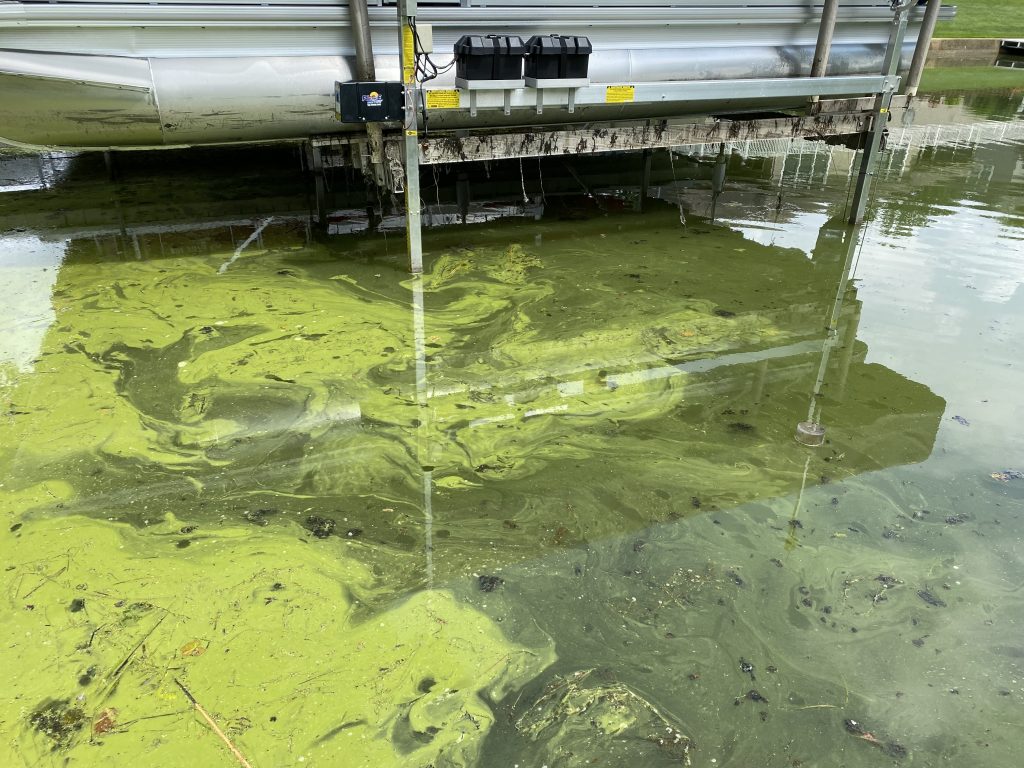
What is blue-green algae?
Blue-green algae actually goes by two names.
The first is “blue-green algae” and the second is the more-proper “cyanobacteria.” The name is a little misleading, though, because blue-green algae aren’t quite plants or algae. We call them algae because they’re free-floating and grow in colonies, but in reality, blue-green algae are a form of bacteria. Cyanobacteria are found all over the world, on both land and water. They’re microscopic but can be seen when they’re in a colony, or bloom.
“They’re natural, and super important, but they can get way out of balance and produce toxins,” explains Adrienne Daeger, our research program specialist.
The ideal condition for blue-green algae blooms is warm, still, shallow water — much like the water you’d find along a shoreline. “But toxins are not always well-coordinated with the size of the bloom,” Adrienne points out. “It’s hard to draw a direct correlation. When in doubt, stay out!”
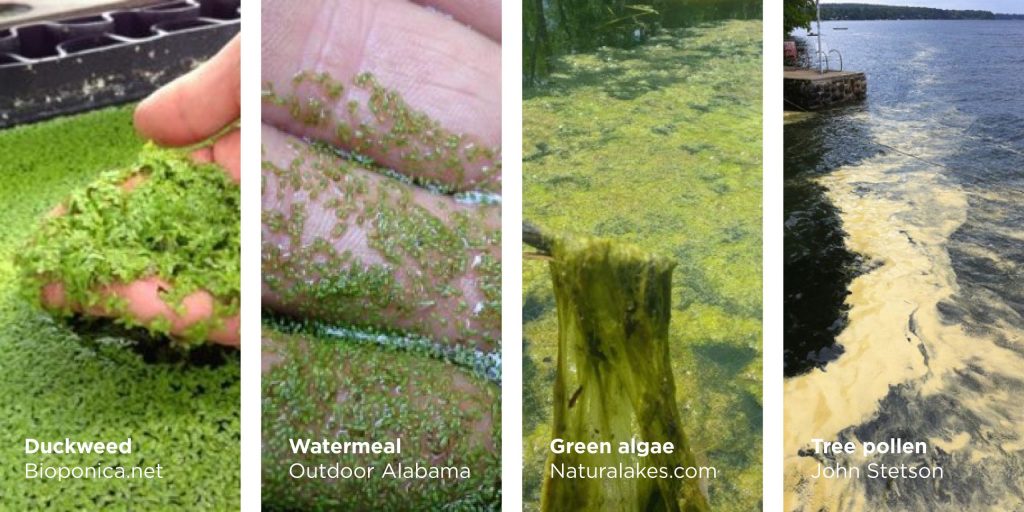
How to identify blue-green algae, and what to do if you see a bloom
Blue-green algae is a form of bacteria, so the cells interact with water differently than true algae, almost appearing to be a part of a water. You won’t be able to identify individual cells or roots. A bloom can even seem to turn the water into “pea soup,” moving along with the water and changing its tint. Sometimes cells can clump together, but it still won’t be picked up as easily as green algae.
The green stuff you see in your lake might not be blue-green algae! Here are a few identifiers:
- If you see leaves or roots, or distinguishable parts, it’s likely a tiny (and harmless) aquatic plant like duckweed.
- Stringy, silky substances that can be draped over a stick are green algae.
- If it’s yellow and almost “dusty” in texture, it might act like blue-green algae, but it’s actually tree pollen.
Where can I find blue green algae blooms?
Blooms are most often found in shallow, warm water. Be especially mindful of secluded bays or beaches, where water is stagnant. Blooms can also be “pushed” across a lake by wind! In the right circumstances, the downwind side of your lake is more likely to have a bloom.
Microcystin is the most common toxin produced by cyanobacteria in our county, so that’s what the Lilly Center focuses on when sampling blue-green algae blooms. We measure microcystin in parts per billion. Think about it this way: For every drop of toxin, there would be a billion drops of water. That tells you how potent the toxin is!
When do blooms occur?
In our lakes, cyanobacteria blooms will typically happen in mid-to-late summer. Warm weather and plenty of sunshine (as well as increased nutrients come from a variety of sources, such as storm water runoff, and decaying algae and other organisms) are the key factors.
When cyanobacteria get an advantage and are able to grow quickly, they smother other kinds of algae. Then, the blue-green algae grows and multiplies until it uses up available resources.
When the bloom begins to die, it releases toxin (microsystin) if the cells contain it. Cyanobacteria are partial to warm water, so nutrient-rich lakes on warm summer days are particularly ripe for blooms.
Do blue green algae blooms always produce a toxin?
No. Cyanobacteria is full of mysteries… and one of those is that blooms do not always produce the microcystin toxin!
It always has the potential to, though, and that’s why the Lilly Center recommends staying away from water that has a visible bloom. There’s no way to tell if the bloom is toxic until the water is tested.
You are encouraged to tell the Lilly Center when blooms are happening so we can sample them. Follow the guide below! (And if you’re not sure if you’re seeing blue-green algae or green algae, stay out of the water.)
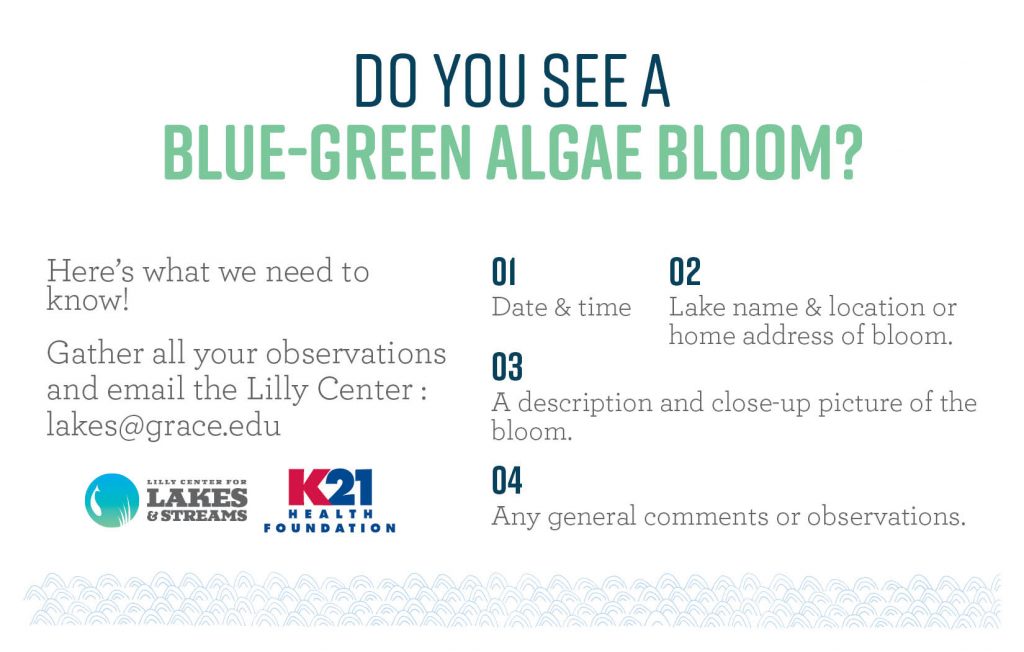
How we monitor cyanobacteria in local lakes
Every week during the summer, the Lilly Center tests and reports on water samples from 14 all-sport lakes and six beaches.
We want to get that data into your hands! Each week’s results are posted to the microcystin data page. If the toxin is detected, that percentage will be noted. If the percentage is higher than 0.8 ppb, animals are at risk. If it is above 8.0 ppb, humans are at risk. In any case, it is best to keep everyone out of the water! This website gives helpful information about the risks of coming into contact with blue green algae.
It’s important to note that algae populations and toxin conditions vary between lakes, which is why not all lakes can be treated the same.
Due to previous research, forecasting and prediction are not currently safe, feasible ways of determining whether water is safe. That’s why the Lilly Center looks at other factors, too, to see if any of those point to why and when blue-green algae produces toxins.
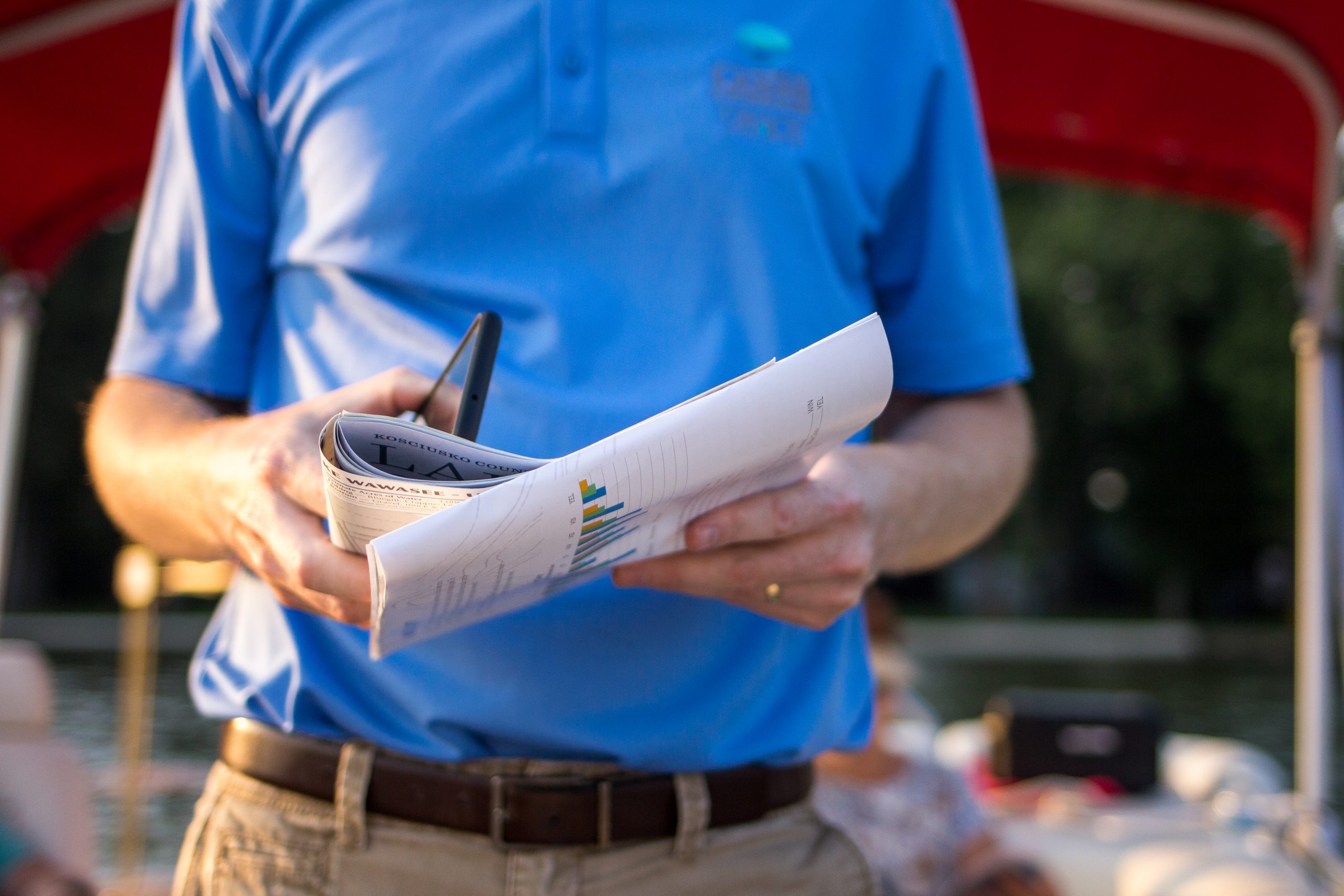
Help us do research!
Have you taken our lake property survey yet? It’s a quick, easy way to help our team gather valuable anecdotal data.
How do I prevent blooms?
There are a few ways to help limit blooms. This is what the Indiana Department of Natural Resources (IDEM) suggests:
- Most established lawns do NOT need phosphorus to be healthy. If applying fertilizer, use a phosphorus-free lawn fertilizer. This is critical if you live on a lake. Lawn-fertilizer packaging is labeled with three numbers for nutrient content. A zero as the middle number indicates a phosphorus-free fertilizer.
- Do not over fertilize in your garden. Check soil nutrient levels prior to applying garden fertilizer to ensure correct application. Soil test kits can be purchased from some local hardware stores and through online distributors.
- Do not fertilize up to the edge of a waterway. Check with your local government for any specific setback requirements.
- Do not dispose of grass clippings or leaves in or near a waterway.
- To prevent inputs from human waste, have your septic system inspected and tank pumped out at least every two years.
- If conducting land disturbing activity, prevent soil and organic matter from washing into waterways, as soil can carry nutrients into the waterway.
Although it is not possible to completely stop blue green algae blooms, following these guidelines can help slow down the frequency and severity. And if you spot a bloom, contact the Lilly Center! If we can, we will come sample the bloom and test the water for microcystin.
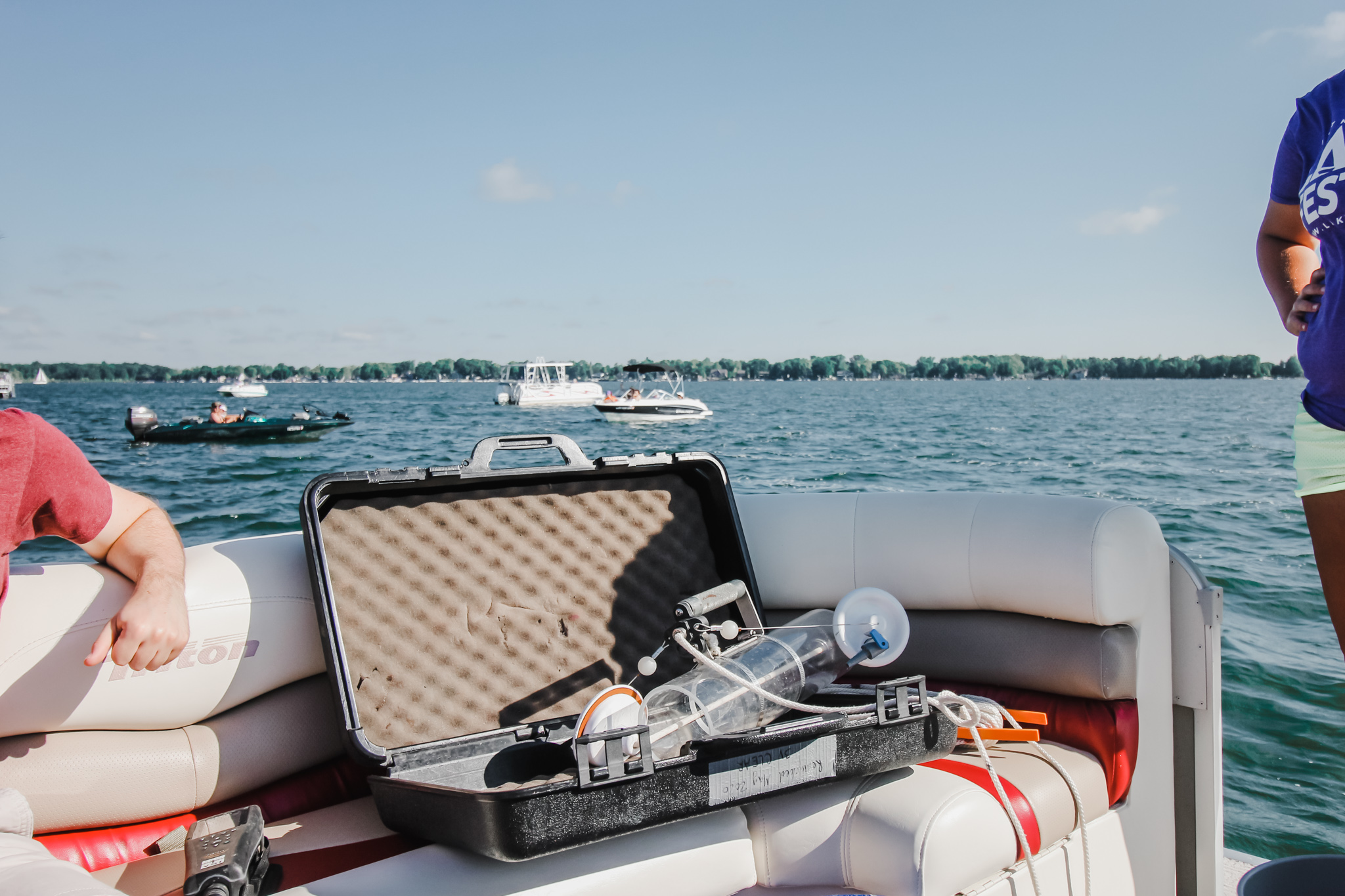
Get more out of your time at the lake
When you receive these weekly emails, you’ll know the amount of toxin in 14 major lakes and at seven beaches throughout Kosciusko County. We send them every Friday from June-August!
We work closely with the Indiana Department of Environmental Management. Much of our process for gathering, analyzing and reporting cyanobacteria is parallel with what they do! Special thanks to Kassia for fielding questions and collaborating on research.